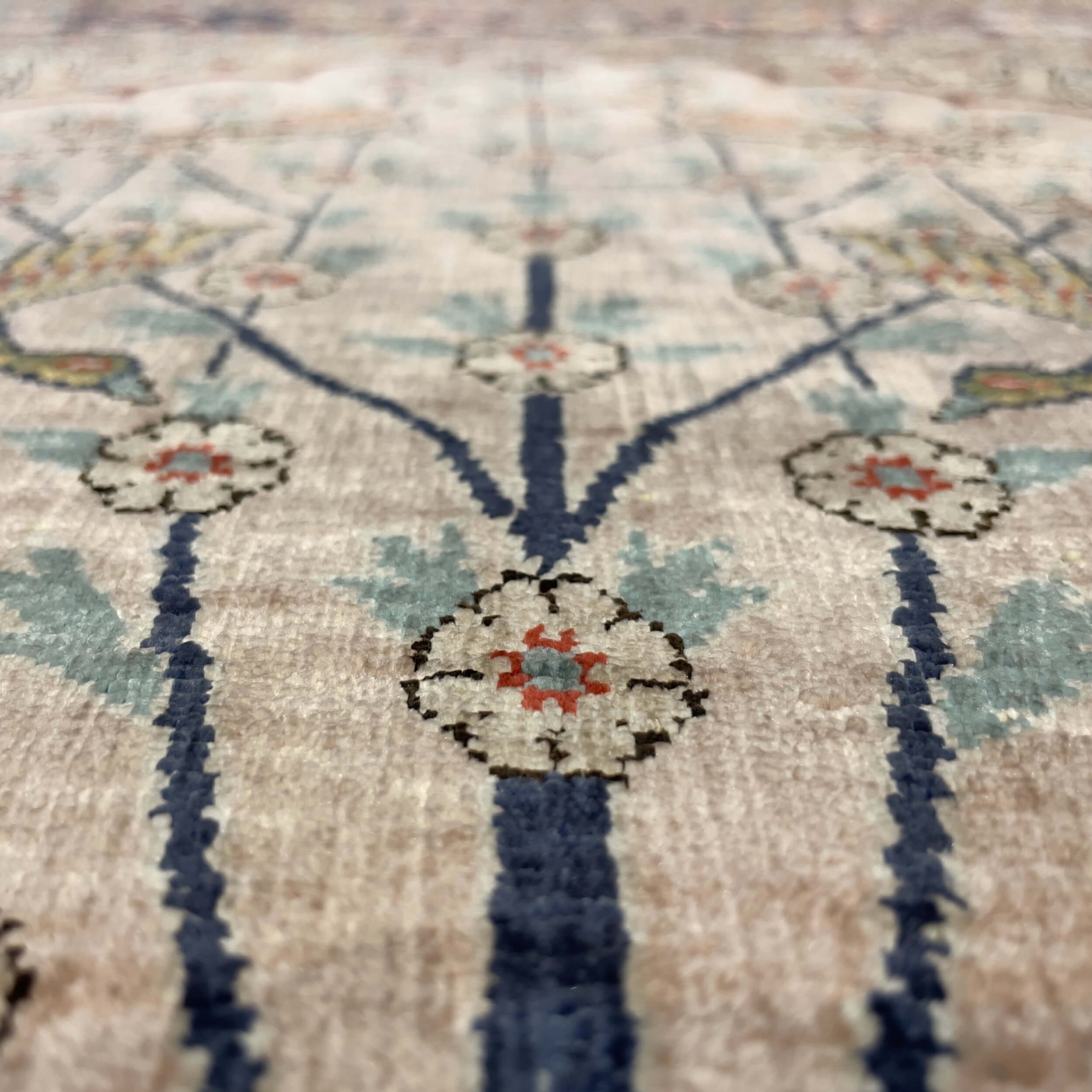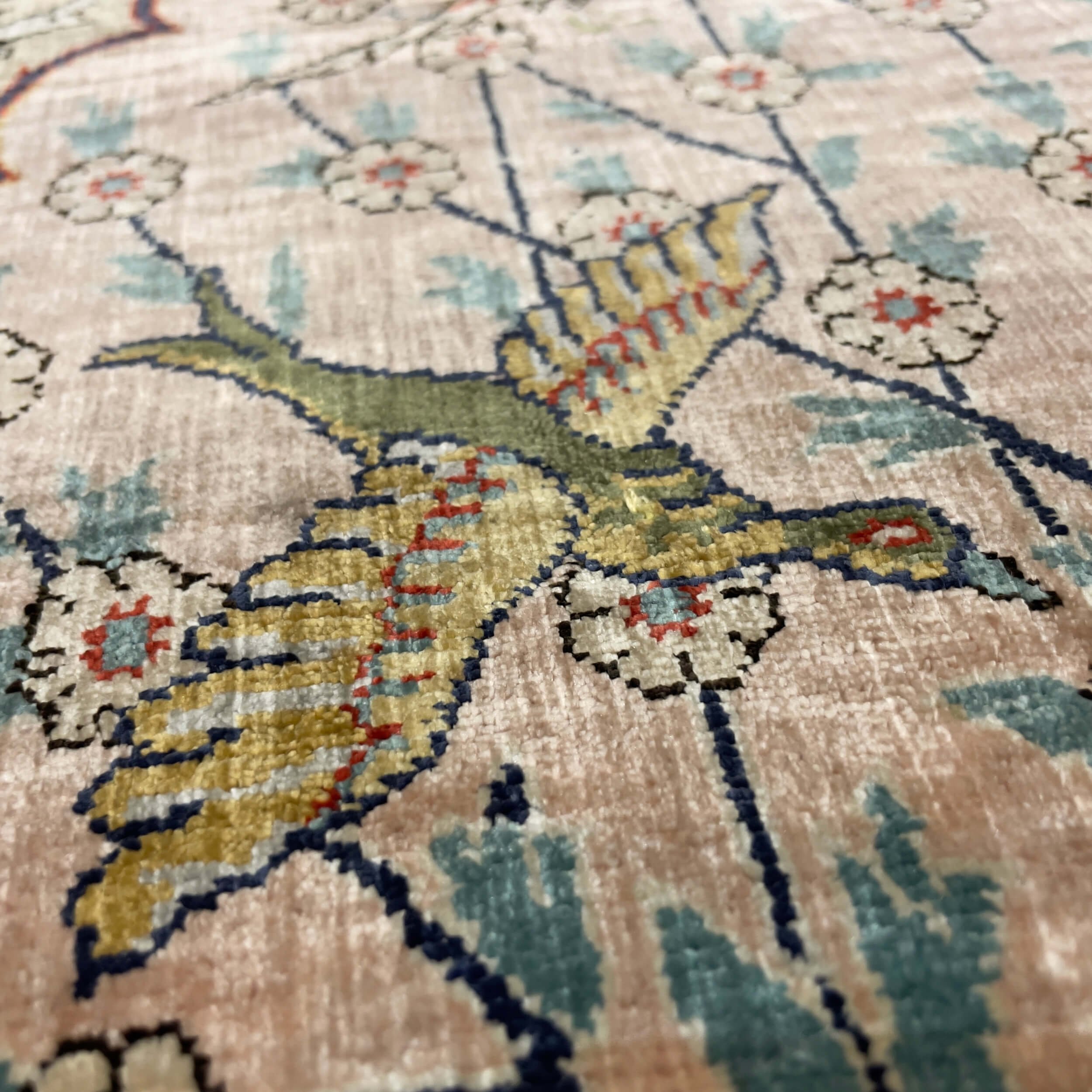Hereke, Silk, 1950s









Description:
Crafted by hand with high quality silk threads, this Hereke rug's origin traces back to the late 1950s.
Hereke rugs emerged in the Ottoman Empire when Sultan Abdulmejid I initiated their production in 1841 for his palace, employing the era's leading weavers. These luxurious rugs were produced exclusively for the palace until the late 19th century when they became commercially available. Production was limited post-Ottoman era but revived in the mid-20th century.
The rug features a classic 'mihrab' design, which is often found in prayer rugs, inviting reflection and serenity. The central field is adorned with a flourishing tree of life, a symbolic motif representing eternal life and prosperity.
Each leaf and branch is intricately detailed and the palette includes soft pinks, blues, and greens creating a harmonious visual experience, framed by by deep, indigo borders richly decorated with botanical motifs.
The high knot count per square inch not only provides a testament to its durability but also to the incredible precision invested in its creation.
An object of both art and history, this Hereke silk rug is ideal for collectors and enthusiasts alike who wish to bring a touch of Ottoman sophistication to their space.
Features:
Hand-knotted
Silk
142 x 88 cm
Year: 1950s
Origin:
Turkey
Price Request
Fill out the form below to request the price or additional information.

